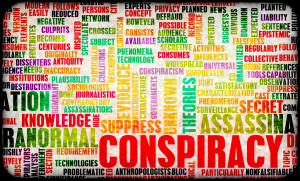Over the last month we’ve been looking on the darker side of things, and at the way love and terror go so very well together. And they should, really. They are the most basic and universal of human emotions. They are intertwined and hardwired into our psyches, a part of the survival instinct that keeps our species alive and multiplying. They transcend culture, class, and temperament.
For instance, people feel envy over different things and react to it in different ways. I may never sympathize with someone enraged by some slight or another, even though I may understand it on a logical level. But someone who is terrified?
Absolutely.
The funny thing is that, many of us silly humans, seem to still feel that our emotions are unlike anyone else’s. “No one else can understand my heartache or my terror,” we tell ourselves. “They can’t know what I feel. Not really.”
Well, actually, yes, they can. That’s the basis for group therapy, after all, but we do like to feel like we are all the beautiful, unique snowflakes our mothers told us we were, don’t we?
From a writer’s perspective, the universality of these emotions and the vaulted position people like to place their own emotional experiences rather works in our favor. Love and fear are so ingrained in the human psyche that it’s hard to write compelling fiction without tripping over them both while gazing off into the clouds of our imaginations.
Fear is probably the first and most vital of emotions. The need to not get eaten by something big and bad, after all, is the primary instinct of most creatures on this planet. The fear of death, failure, disappointment, loneliness, and pain is prevalent across the fiction board. Fear is the root of tension and plants doubt in every protagonist in just about every book ever written. Small or large, incidental or monstrous, we all recognize the people we’re reading about when their fears are put on the page, and we all hope they overcome their fears somehow, even if (or especially because) we often cannot overcome our own.
At the same time humans are pack animals, and so it’s no surprise that we feel the need to include the binding emotion of love in our stories. The characters don’t necessarily have to be involved in the affair of the century. They simply have to care about something or someone. A character who cares for nothing, is…well…rather boring, to be honest. The anti-hero, Riddick, doesn’t care about anything or anyone when we first meet him in Pitch Black, but it is through his slow turn toward caring for the individuals around him that he becomes human to us, someone to sympathize with. I don’t think anyone could ever say that his caring strays to the romantic—the man is, after all, a psychopath—but his attachments motivate and drive him through multiple films. He changes from a monster himself, into one of us.
Or rather, I should say, his attachments mixed with the inevitable fear of losing those attachments, is what motivates him. It all comes back to the fear in fiction, doesn’t it? Loving or needing something might be readily recognizable, but it’s the fear of losing those things or of them turning against us, that really makes it worth reading.
Anytime love and fear end up on a page, we’re using the universal to make a moment personal. We give the readers something almost subconsciously familiar, made interesting by being seen through someone else’s eyes. We show a window into emotional lives that, at first blush, looks nothing like the reader’s, but in actuality uses their personal experiences to pull them further into the story.
We writers often struggle to write something compelling and moving. It’s nice to get a free-bee every so often.



